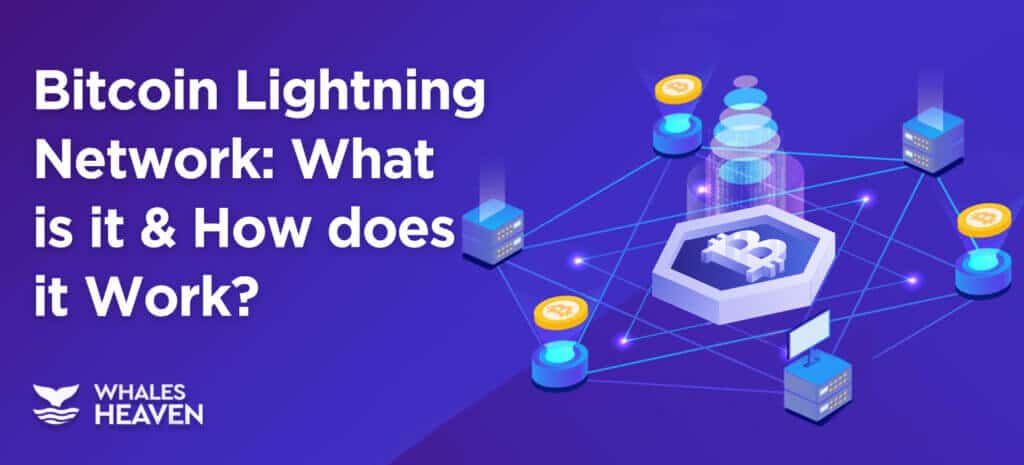
As more and more users get on the Bitcoin train, the bitcoin blockchain now has to process unprecedented volumes of transactions daily. As a result, transactions are taking much longer than before.
BTC enthusiasts keep pushing for the mainstream acceptance of BTC in daily transactions. But for bitcoin to replace the currently used traditional payment systems, it must first be able to compete with them.
The blockchain is only capable of validating 7 transactions per second (tps). As the system gets increasingly congested overtime, users now experience slower transactions and high gas fees. For comparison, Visa processes about 65,000 tps.
Developers around the world are seeking ways to solve these problems. This is where the Bitcoin Lightning Network comes in.
What is Bitcoin Lightning Network?
Joseph Poon and Thaddeus Dryja first described Lightning Network in 2015, in their published white paper.
The Lightning Network is a transactional system that adds an extra layer (layer 2) to the blockchain. It is designed to allow a group of users who transact frequently to create a restricted payment channel between them. This leads to instant transactions validation and very few fees.
How does it work?
Santi and Carlos work together. They send BTC to each often and it needs to be done instantly and with minimal fees. The Lightning network allows them to set up unique payment channels on a separate layer from the bitcoin public ledger.
Step 1: They create a multi-signature wallet. Soft fork systems like the Taproot update help to facilitate multi-signature features on the blockchain. Santi and Carlos can access the wallet with their individual private keys.
Step 2: They both agree to deposit a specific amount of Bitcoin – say, 5 BTC each – into that multi-signature wallet.
Step 3: They proceed to perform a series of transactions between just the two of them. Limited to the amount of BTC deposited in the wallet.
Step 4: The transactions are processed instantly and the records are stored in the shared wallet. For instance, for Santi to send 2 BTC to Carlos, all he needs to do is transfer the ownership rights of the 2 BTC to amount to him.
Step 5: They both use their private keys to sign for an updated balance sheet after each transaction.
Whenever Santi and Carlos decide to end the transaction, the algorithm will use the most recent balance sheet update to determine who gets how much.
The actual distribution of funds and validation on the public Blockchain ledger only happens when the channel gets closed. And then, it reflects as a single transaction.
What are the advantages of Lightning Network?
- Increased efficiency with instant transactions.
- Much lower transaction costs. As little as 1 Satoshi (less than 1 cent) instead of $13 on the public blockchain.
- Instant Cross-Chain Transactions to help users swap cryptocurrencies without using crypto exchanges.
Conclusion
Although it still has a few challenges and limitations, experts expect that Lightning Network will play a huge role in the long-term sustainability and mainstream acceptance of Bitcoin globally.